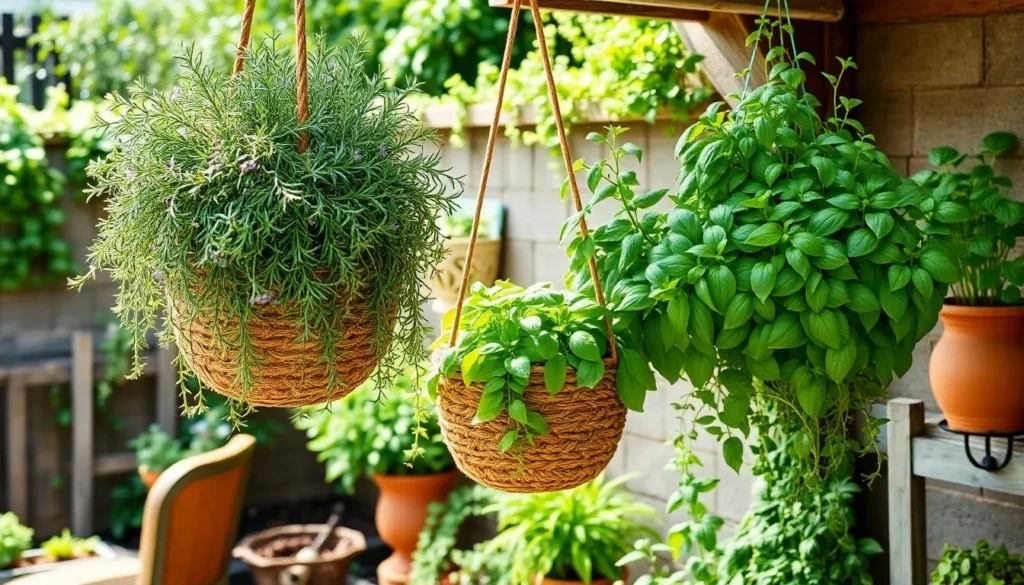Imagine stepping outside your door to pluck fresh basil or mint from a hanging basket, their aromatic leaves infusing your meals with a burst of flavor. Growing herbs in hanging baskets is not only a space-savvy solution for gardeners of all levels but also a delightful way to bring the beauty and utility of a garden to your doorstep. Whether you’re nurturing a lush balcony garden or adding a touch of green to your patio, hanging baskets offer a practical and aesthetic alternative to traditional herb gardens.
For beginner gardeners, this method simplifies the process, providing an easy entry point into the world of herb cultivation. Experienced gardeners, on the other hand, will find that hanging baskets allow for creative experimentation with different herb combinations and arrangements. In this article, you’ll discover the essentials of selecting the right herbs, ensuring optimal growing conditions, and maintaining your hanging garden to thrive throughout the seasons.
We will explore everything from choosing the perfect basket and soil mix to designing a watering routine that keeps your herbs happy and healthy. You’ll learn how to maximize light exposure, manage pests naturally, and even harvest your herbs for continuous growth. Whether you’re looking to enhance your culinary creations or simply enjoy the vibrant greenery, this guide will empower you to cultivate a flourishing herb garden that fits right into your lifestyle.
Select Suitable Herb Varieties
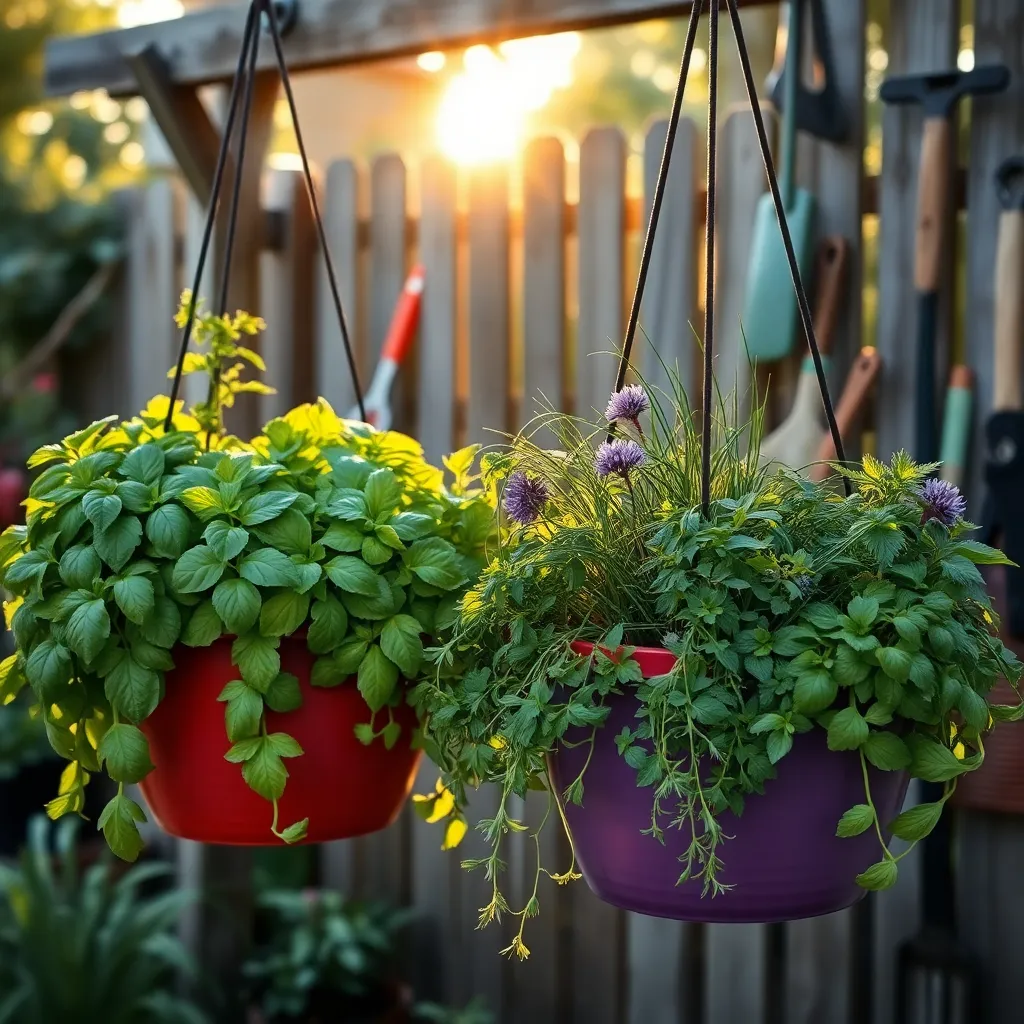
Choosing the right herb varieties for hanging baskets is crucial for a thriving garden. Compact and trailing herbs like thyme, oregano, and creeping rosemary are ideal because of their growth habits and space efficiency.
It’s essential to consider the light conditions where your hanging basket will be placed. Full sun is perfect for most Mediterranean herbs such as basil and sage, while partial shade suits parsley and mint better.
For beginners, start with hardy herbs that are forgiving of beginner mistakes. Chives and mint are excellent choices as they are resilient and can tolerate a range of conditions.
Advanced gardeners might experiment with less common varieties like lemon balm or pineapple sage, which can add unique flavors to your garden. Ensure these herbs have well-draining soil and are watered consistently, but not excessively to prevent root rot.
Choose Appropriate Basket Size
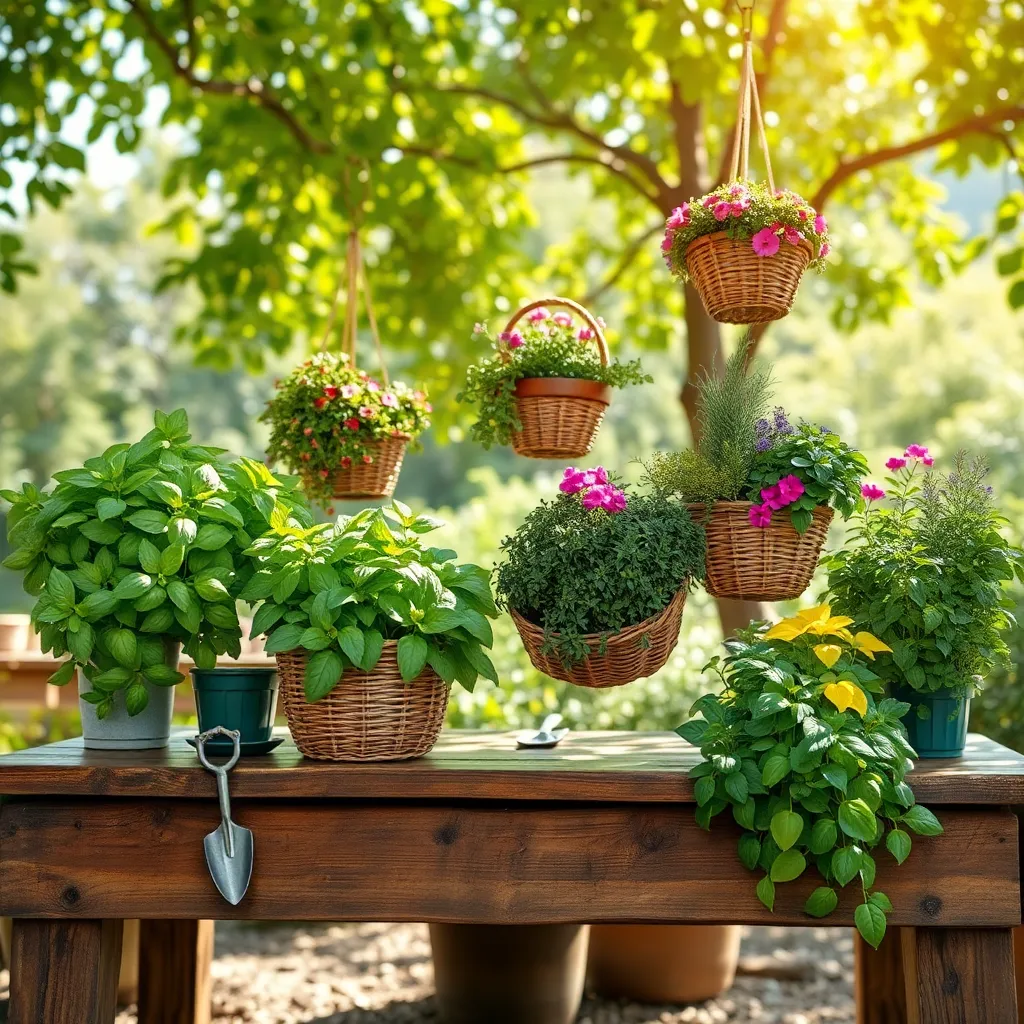
Choosing the right basket size is crucial for the success of your hanging herb garden. Smaller baskets are ideal for compact herbs like chives and thyme, while larger baskets can accommodate more robust growers like basil and mint.
Consider the mature size of the herbs when selecting your basket. For beginners, a basket with a diameter of 12-14 inches is a good starting point, providing enough space for a variety of small to medium herbs.
Drainage is key in hanging baskets, so ensure your chosen basket has adequate drainage holes. This prevents root rot, a common issue in containers without proper drainage, especially in baskets that will be exposed to rain.
Advanced gardeners might experiment with self-watering baskets to maintain consistent moisture levels. These baskets are particularly useful in hot climates where the soil tends to dry out quickly, ensuring your herbs stay hydrated without frequent watering.
Prepare Well-Draining Soil Mix
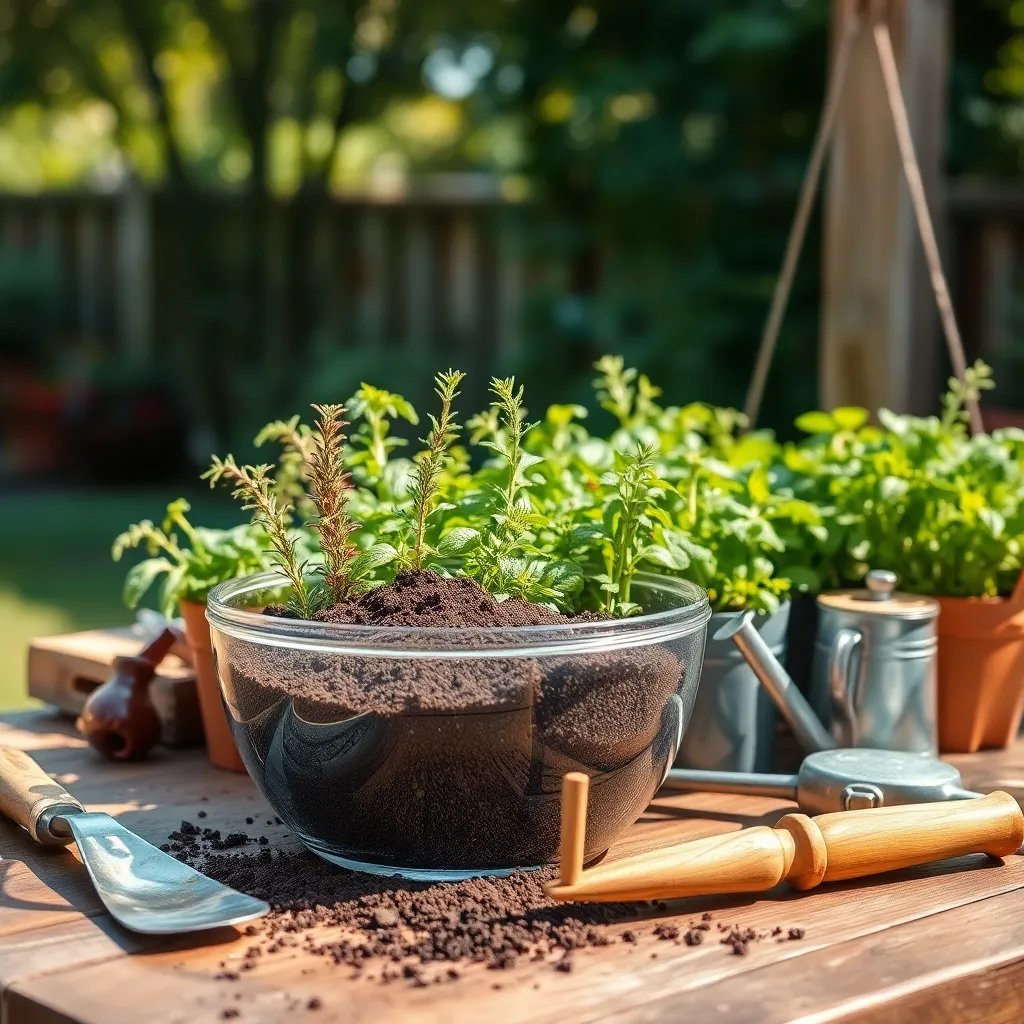
To ensure your herbs thrive in hanging baskets, it’s crucial to prepare a well-draining soil mix. This not only prevents waterlogging but also provides the roots with the oxygen they need.
Begin by selecting a high-quality potting mix as your base. Look for a mix that is labeled for container gardening, as this will often include ingredients that promote drainage.
Enhance the drainage of your potting mix by adding coarse materials. You can mix in materials like perlite or coarse sand, which help to create air pockets within the soil.
For a more advanced approach, consider incorporating coconut coir into your soil mix. Coconut coir retains moisture without becoming soggy, providing a balanced environment for your herbs.
Once your soil mix is ready, fill the basket just below the rim to allow room for watering. This prevents water from spilling over, ensuring it reaches the roots effectively.
Regularly check the moisture level by inserting your finger about an inch into the soil. If it feels dry at that depth, it’s time to water your herbs, ensuring they receive consistent hydration without overwatering.
Plant Herbs with Adequate Spacing
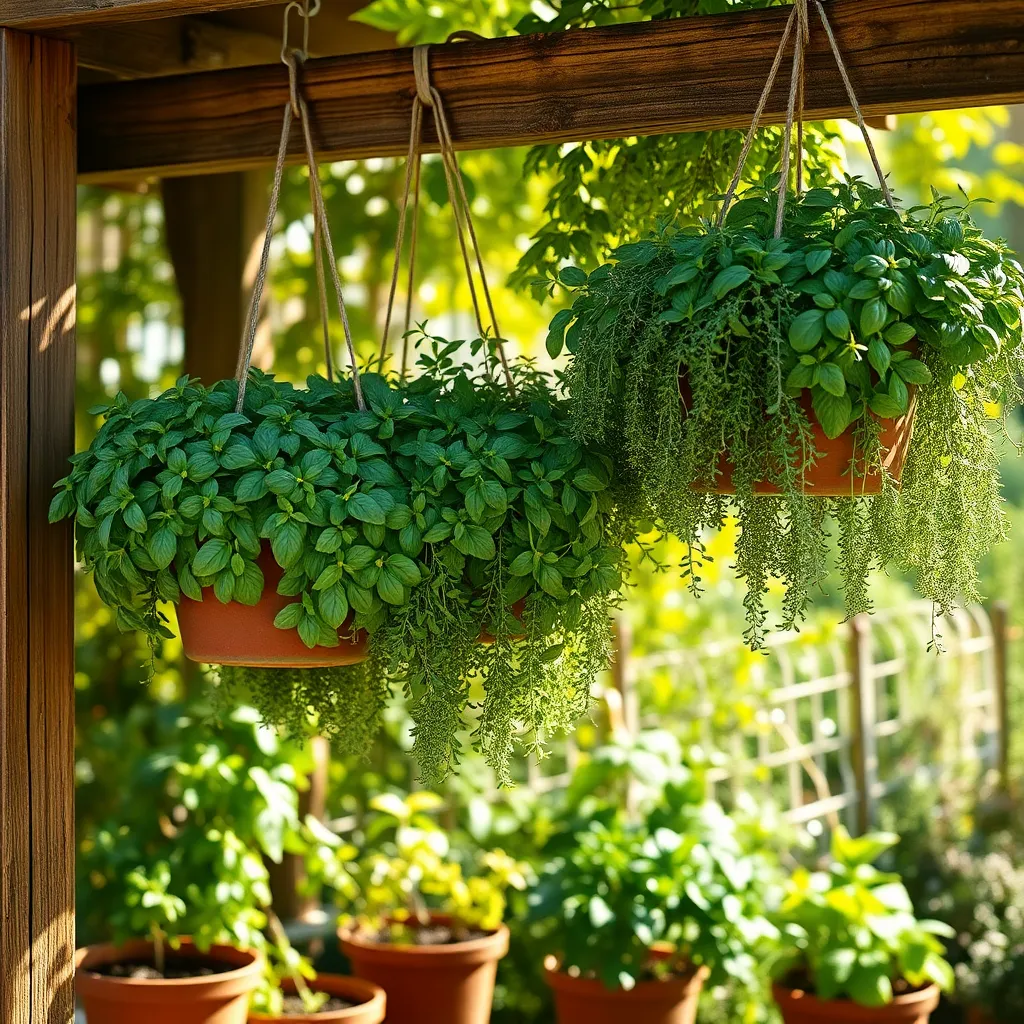
Proper spacing is crucial when planting herbs in hanging baskets to ensure each plant receives enough light and air circulation. Overcrowding can lead to reduced growth and increased susceptibility to pests and diseases. Consider the mature size of each herb when deciding on spacing, as some herbs like basil and mint can spread significantly. A general guideline is to allow at least 4 to 6 inches between smaller herbs and up to 10 inches for larger ones.
When planning your hanging basket, select a combination of herbs that have similar growth requirements to optimize care. For example, rosemary and thyme both enjoy well-drained soil and similar watering needs. Arrange the plants so that taller herbs are in the center and trailing or smaller ones around the edges. This layout not only maximizes space but also creates an aesthetically pleasing arrangement.
Regularly prune your herbs to maintain their size and encourage bushier growth, which can help in maintaining the spacing over time. Consistent pruning prevents herbs from becoming leggy and competing for resources. Monitor your hanging baskets frequently, as herbs in containers can dry out more quickly, especially in hot weather. Ensure a consistent watering schedule, allowing the soil to dry slightly between waterings to avoid root rot.
For gardeners looking to maximize their herb harvest, consider using a slow-release fertilizer to provide nutrients over time. This can support the growth of multiple herbs in a confined space like a hanging basket. Additionally, rotate your hanging baskets occasionally to ensure even sunlight exposure and promote uniform growth. With careful planning and regular maintenance, your hanging baskets can become a thriving mini-garden filled with fresh herbs ready for use.
Water and Position for Sunlight
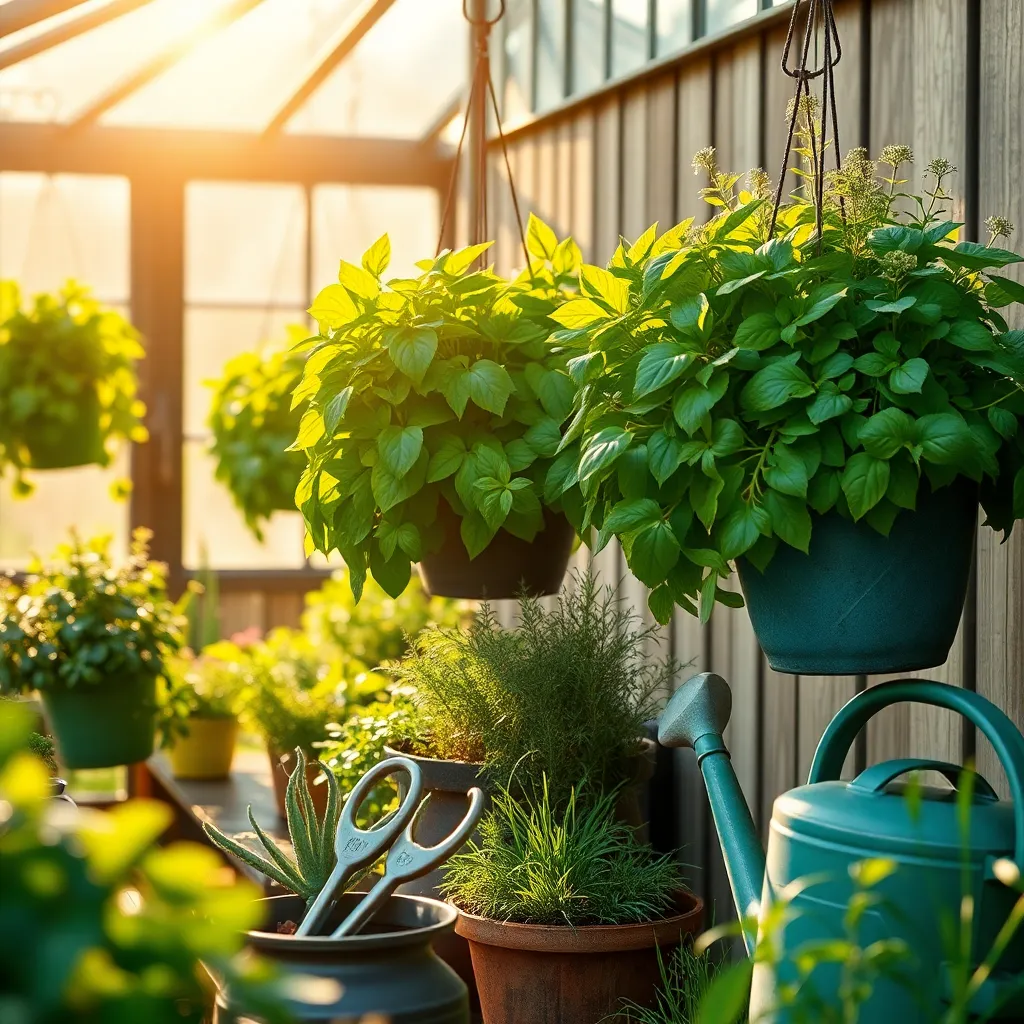
Ensuring your hanging herbs receive the right amount of water is crucial for their health. Water your hanging baskets thoroughly until you see water draining from the bottom, but ensure the soil dries out slightly between waterings to prevent root rot.
Position your hanging baskets to maximize sunlight exposure, which is vital for most herbs. Most culinary herbs, such as basil, rosemary, and thyme, thrive in at least six to eight hours of direct sunlight each day, so a south or west-facing position is ideal.
Consider the microclimate of your hanging basket location, as it can affect watering needs. Baskets in windy or exposed areas may dry out faster and require more frequent watering compared to those in sheltered spots.
For those in hotter climates, consider using a water-retentive soil mix to help maintain moisture levels. Adding materials like coconut coir or perlite can improve the soil’s ability to retain water, especially beneficial during dry spells.
- Tip for advanced gardeners: Use a drip irrigation system with a timer for a consistent watering schedule.
- Sunlight optimization: If sunlight is limited, rotate the baskets weekly to ensure all sides receive equal light.
Conclusion: Growing Success with These Plants
In exploring the art of growing herbs in hanging baskets, we uncovered five key relationship concepts: nurturing growth through consistent care, creating space for individual development, ensuring balance and harmony, fostering resilience, and celebrating shared achievements. By applying these principles, you not only cultivate thriving herbs but also enrich your personal relationships.
As a practical next step, choose one herb to start your hanging garden today, allowing it to symbolize growth in your relationships as you tend to it. Remember, just as a garden flourishes with attention and love, so do your connections with others.
I encourage you to bookmark this article for future reference. It will serve as a handy guide whenever you need a reminder or wish to share these insights with others. Embrace the journey of nurturing not only your plants but your relationships as well. By investing time and love now, you’re setting the groundwork for lasting success and joy in your connections. Keep these principles close, and watch as your relationships—and your herb garden—thrive beautifully together.

